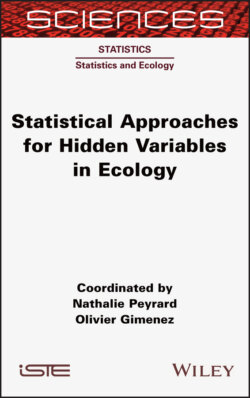Читать книгу Statistical Approaches for Hidden Variables in Ecology - Nathalie Peyrard - Страница 35
1.3.3. Data smoothing
ОглавлениеIn this case, the frequency of data acquisition was high (one point every 10 s). While there were few errors in the data (obtained using GPS), the temporal proximity of observations may result in a somewhat erratic-looking trajectory. This erratic effect is even more pronounced in the movement metrics used to detect different activities.
To correct errors, let us take a Gaussian linear hidden Markov model, as described in section 1.2.1. Taking the equations in model [1.1], matrices A and B are taken as known and equal to the identity, while vectors μ and ν are known and equal to 0. Matrices Σm and Σo are presumed to be diagonal, but unknown. The unknown variables, represented the actual position, in this model are estimated using an EM algorithm from the MARSS package. The estimated parameters are then used to reconstruct the real trajectory by means of Kalman smoothing.
Figure 1.7 shows an example of trajectory smoothing. This smoothing process greatly reduces the irregularities present in the trajectory. It is important to note that we are now working with processed data. This transformation is shown here for illustrative purposes, although its relevance in this specific case is somewhat debatable.
Figure 1.7. Result of Kalman smoothing on part of the booby trajectories. Smoothing clearly removes many of the erratic aspects of the trajectory. For a color version of this figure, see www.iste.co.uk/peyrard/ecology.zip
